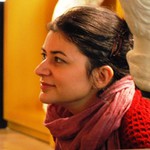Greek and Roman Antiquities
The Classical Antiquities Department is one of the largest sections of the Vatican Museums and includes all the statuary, both Greek and Roman, of the ancient papal collection. Its Director is Dr. Giandomenico Spinola, and he oversees some of the most famous and fascinating areas of the Vatican Museums and "outside territories of Vatican" including Castel Gandolfo, the archaeological sites of: Saint John in Lateran, Saint Mary Major, Santa Maria di Galeria, and Palazzo della Cancelleria.
In the Vatican Museums the Classical antiquities Department pertains: the Pio Clementino Museum is one of the most beautiful and most frequently visited areas of the Vatican and is located within the Octagonal Courtyard. This particular courtyard was the inner courtyard of the Belvedere and is considered the heart of the Museum. Originally square in shape and surrounded by orange trees; it was here that Pope Julius II placed his collection of ancient statues in 1503.
The Gallery of the Candelabra (1761) was originally an open loggia and was named after the candelabra, which stand in front of the pillars. The arcades of the Gallery were closed by Simonetti and Camporese under Pius VI. The ceiling of the Gallery was painted by Domenico Torti and Ludwig Seitz under the Pontificate of Leo XIII during the years of 1883-87.
The Chiaramonti Museum was named after the family of its founder, Pius VII, and has only slightly changed in appearance since it was first laid out by the great sculptor, Antonio Canova. Nearly one thousand pieces of ancient sculpture are exhibited in the Museum, including statues of gods, portrait statues, pagan altars, architectural ornaments, urns and sarcophagi.
The Braccio Nuovo, which was ideated by Raffaele Stern under Pope Pius VII (1800-1823) in order to provide new spaces for the works of art taken to France by Napoleon and finally returned to the Vatican thanks to Antonio Canova.
The Gregoriano Profano Museumcontains a collection of antiquities formerly housed in the Lateran Museum. This particular collection was originally installed in the Lateran Palace by Gregory XVI and inaugurated on May 14, 1844. Most of the material within the collection comes from previous excavations and finds within the Papal States: Greek originals and copies made during the Roman Imperial period (1st-3rd Cent. AD), Greek originals of the Classical Age (5th-4th Cent. BC) and miscellaneous Roman sculptures arranged in chronological order: historical portraits and reliefs, urns, funerary monuments, sarcophagi, cult statues, and ornamental sculpture.
The recent excavation at Santa Rosarevealed one of the most fascinating and appreciated archaeological sites in the world. Given its early time period (I Century BC- III AD) and pagan content, the site entered the Museum’s care. Unique to the site, all the objects of the ancient middle-class cemetery were left in the exact place they were found. The setting of several catwalks allows visitors to walk through the archaeological site. The inscriptions on the tombs and ancient colombari have proven new details of the period’s Roman life and culture.

Dr. Claudia Valeri
Deputy Curator
Claudia Valeri graduated in “Archeology, Greek and Roman Art History” from the Conservation of Cultural Heritage Department at the University of Tuscia in Viterbo. In 1999, she obtained the diploma of specialization at the University “La Sapienza” of Rome, where, in 2003, she also earned a Ph.D. in Classical Archeology. From 2004 to 2007, she worked as a research fellow and later as a lecturer in the Department of Literatures and Philosophy of the “La Sapienza” University in Rome, giving lectures on Classical Archology.
She completed her training by studying in Germany, Austria, and Greece, and attended several national and international conferences. She collaborated with the Superintendence and Universities to compile scientific catalogs and to organize exhibitions as well as museums’ exhibits.
As of September 3, 2007, she is the Deputy Curator of the Classical Antiquities Department in the Vatican Museums, and in particular, she researches the work and restoration of ancient statues collections. Involved in the organization of several conferences and exhibitions in the Vatican Museums, more recently, she headed the curatorship of the exhibition titled Winckelmann: Masterpieces throughout the Vatican Museums (on display from November 9, 2018 - March 9, 2019).
In 2014, she obtained the National Scientific Qualification to teach at Italian Universities. Since December 2016, she is an Ordinary Member of the National Institute of Archeology and Art History, and since June 2019, she is a Corresponding Member of the German Archaeological Institute.
Her publications are mainly about Roman sculpture with a particular reference to the Phlegraean Fields and to the Vatican Museums collection, which includes both the antiquarian and the topographic research of the study of monumental sites in Rome and the city of Ostia.
Spotlights

© 2025 Patrons of the Arts
in the Vatican Museums
Vatican Museums V-00120,
Vatican City State (Europe)
+39 0669864499
